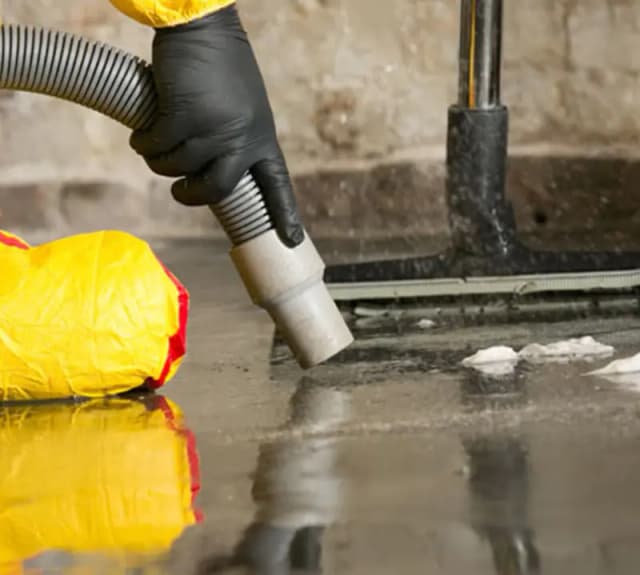
Ceiling water damage is one of the most common and frustrating problems homeowners face. It not only affects the aesthetic appeal of your home but also poses serious structural risks if not addressed quickly. Understanding the causes behind ceiling water damage can help you take timely action and protect your property from further deterioration.
Leaking Roofs: The Most Common Culprit
One of the primary causes of ceiling water damage is a leaking roof. Whether it’s missing shingles, damaged flashing, or worn-out roofing materials, roof leaks allow water to seep through and collect above your ceiling. This often leads to brown stains, bubbling paint, and in severe cases, structural sagging.
In places like Edmonton and Calgary, where heavy snowfall and rain are common, roof leaks can quickly escalate into major problems. That’s why many homeowners report ceiling water damage Edmonton during the spring thaw or after a summer storm. Regular roof inspections, especially before and after harsh weather, can help you catch leaks early.
Plumbing Leaks Hidden Above the Ceiling
Plumbing systems that run through the ceiling space—such as those connected to upstairs bathrooms or kitchens—can be another major source of water damage. Leaking pipes, burst fittings, or loose joints can drip water slowly onto the ceiling below, often unnoticed until visible signs appear.
A slow, hidden leak might cause discoloration or create a musty smell long before water actually drips through. This is especially relevant in multi-level homes in Calgary, where aging infrastructure contributes significantly to ceiling water damage in Calgary neighborhoods. If you suspect a plumbing issue, shutting off the water supply and calling a professional plumber is the best immediate step.
Overflowing or Clogged Gutters
You might not associate your gutters with ceiling damage, but they play a crucial role in directing rainwater away from your home. When gutters become clogged with debris like leaves, twigs, or ice, water can overflow and seep into the roofline. From there, it may travel into your ceiling, causing internal water damage.
Maintaining your gutters regularly—especially in autumn and early spring—can prevent overflow and significantly reduce the chances of water intrusion. Homes in Edmonton, where freezing temperatures are common, are particularly at risk for ice dams that block gutters and contribute to ceiling water damage in Edmonton homes.
Attic Condensation and Poor Ventilation
Inadequate ventilation in the attic can cause warm, moist air to rise from your living space and condense on the underside of the roof. Over time, this can lead to moisture accumulation that drips onto the ceiling below, mimicking a roof leak.
Condensation is more likely in homes that are poorly insulated or where the ventilation system isn’t properly balanced. This issue can be especially tricky to detect, as it often develops slowly and might not show obvious signs until damage is extensive.
HVAC System Issues
Your heating, ventilation, and air conditioning (HVAC) systems can also contribute to ceiling water damage Calgary. Central air conditioning systems, especially those installed in the attic or upper floors, may develop leaks from condensation lines or faulty drain pans.
If these components clog or crack, the resulting moisture can seep into the surrounding ceiling area. Regular HVAC maintenance and timely filter replacement help minimize this risk, ensuring your system operates efficiently and leak-free.
Faulty or Poorly Installed Appliances
Water heaters, washing machines, and dishwashers, especially if located on upper floors, can also cause unexpected ceiling damage. Faulty hoses, poor installation, or wear and tear can result in water escaping and finding its way into ceilings below.
To avoid this, always ensure appliances are installed by licensed professionals and inspected regularly. Look for early signs like water stains around the base of the appliance or unusual sounds that could indicate leaks.
Extreme Weather Events
In regions like Calgary and Edmonton, sudden and extreme weather changes can also lead to ceiling water damage. Heavy rainfalls, snowstorms, hail, and rapid snow melts can overload your home’s drainage system. If the exterior defenses—like your roof or foundation—aren’t up to the challenge, water can easily infiltrate your ceiling.
It’s crucial to fortify your home’s weather resistance by sealing cracks, maintaining your drainage systems, and conducting seasonal inspections. With such measures, you’ll be better equipped to withstand Alberta’s unpredictable weather patterns.
Inadequate Waterproofing and Sealing
In some homes, particularly older ones, the original waterproofing may no longer be effective. Worn-out sealants around windows, doors, and roof openings can allow water to creep in silently. Over time, even minor infiltration can accumulate enough moisture to cause ceiling damage.
Updating waterproof seals and coatings on your home is a smart preventative measure. This is particularly important in homes located in high-humidity areas or those prone to heavy rain.
Structural Aging and Wear
Over time, every home undergoes wear and tear. Materials like drywall, ceiling tiles, and insulation can degrade, making them more susceptible to water damage. Even small leaks or moisture exposure can lead to sagging ceilings, mold growth, and compromised structural integrity.
If your home is over 20 years old, scheduling a thorough inspection can help identify weak spots in the ceiling before a major problem develops.
How Ideal Response Can Help
When it comes to repairing and preventing ceiling water damage, professional intervention is often necessary. That’s where Ideal Response steps in. With years of experience in water damage restoration, our team offers fast, reliable solutions tailored to both Edmonton and Calgary residents.
From leak detection to complete ceiling restoration, Ideal Response ensures every project meets the highest standards of safety and quality. We understand how disruptive water damage can be and work diligently to restore your home with minimal interruption to your daily life.
Final Thoughts
Ceiling water damage can result from a variety of sources—from roof leaks and plumbing failures to HVAC malfunctions and extreme weather conditions. Regardless of the cause, early detection and prompt action are key to minimizing damage and repair costs.